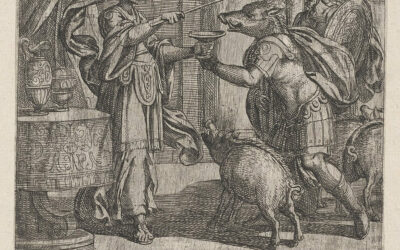
Early Life
As the eldest of four children born to working class Thomas and Cecily Taylor in 1538, Mary had a difficult start in life. Her brother died at the age of five, and her mother, who bore four children in four years, eventually died in childbirth when Mary was just four years old.
Mary married John Pannell in 1559, when she was twenty-one years old, and though we cannot know what their marriage was like, we know she didn’t bear their first child until nine years later. They named him Raphe but he died in infancy. Their daughter Elizabeth was born one year later, soon followed by John and Agnes.
Mary’s husband died the same year Agnes was born, leaving Mary a single mother of three. Her son John died at the age of eighteen, but still Mary chose not to remarry. As far as we know, she lived with her two adult daughters and no men, a situation that was likely to cause suspicion in 16th century rural Yorkshire.
It is said that Mary was the local ‘wise woman’, who lived in a hut at the edge of the woods and supported her family by mixing and selling herbal remedies. At some point this wasn’t proving profitable enough so she had to get a job at Ledston Hall (featured on ‘Most Haunted Live’ in 2007) as a servant to the Witham household.
Accusation of Witchcraft
The records are sparse, but it is said that by 1593, 5-year-old William Witham had developed some kind of illness. Perhaps he reminded Mary of her own son who passed away just a few years earlier, or even her brother who had died at the same age. Whatever the reason, she decided to help the young boy. She mixed up a herbal remedy and took it to Ledston Hall, to be rubbed on the boy’s chest. Mrs Witham mistakenly fed it to her child, which led to his death (Rennison, 2013).
The adult Sir William Witham also died in 1593, but the cause is unknown. It could be a coincidence that he died in the same year as his son, or the deaths could have been related. Some say Mary and William were having an affair, and when he ended it, she bewitched him to death. Others say William’s wife found out about the affair and killed him (The Newsroom, 2016).
Either way, Mary Pannell was accused of witchcraft, specifically of using witchcraft to cause the death of William Witham and his son. She was arrested under the Witchcraft Act of 1562, which defined witchcraft as a crime punishable by death. The law allowed her to be held for three days while she was questioned, with the aim being to extract a confession.

Trial
Without a confession, Mary was taken to trial, but all court records from this period have been lost, so it is uncertain what exactly happened. It appears that nothing happened for the next ten years, and in 1603 Mary was tried in the city of York.
Court records from around this time indicate that a woman accused of witchcraft would be examined for a mark of the devil, or a witch’s teat. This could be any sort of freckle or mole on the body, often in a private place, underneath body hair. The medical examination report would then be read aloud in court. Neighbours would be called as witnesses, and would often blame the accused for failed harvests, the death of cattle, or any harm caused to other people.
Execution
Whatever the evidence presented at Mary’s trial in 1603, she was sentenced to death. It is likely that she was hanged at York, and later her body was brought back to her hometown of Kippax to be burned at the top of a hill near Castleford. This hill has come to be known as Mary Pannell Hill, where during the 1600s, when the area was covered with forest and only very scantily populated, Mary Pannell’s body was burned. The ghost of Mary Pannell is said to haunt the hill to this day (Roberts, 1885).

Additional References
Rennison, E. (2013). Yorkshire Witches. Amberley Publishing.
Roberts, G. (1885). Topography and Natural History of Lofthouse and Its Neighbourhood; with the Diary of a Naturalist and Rural Notes.
The Newsroom. (2016, October 31). The confusing fate of a witch from long ago. Pontefract and Castleford Express.

